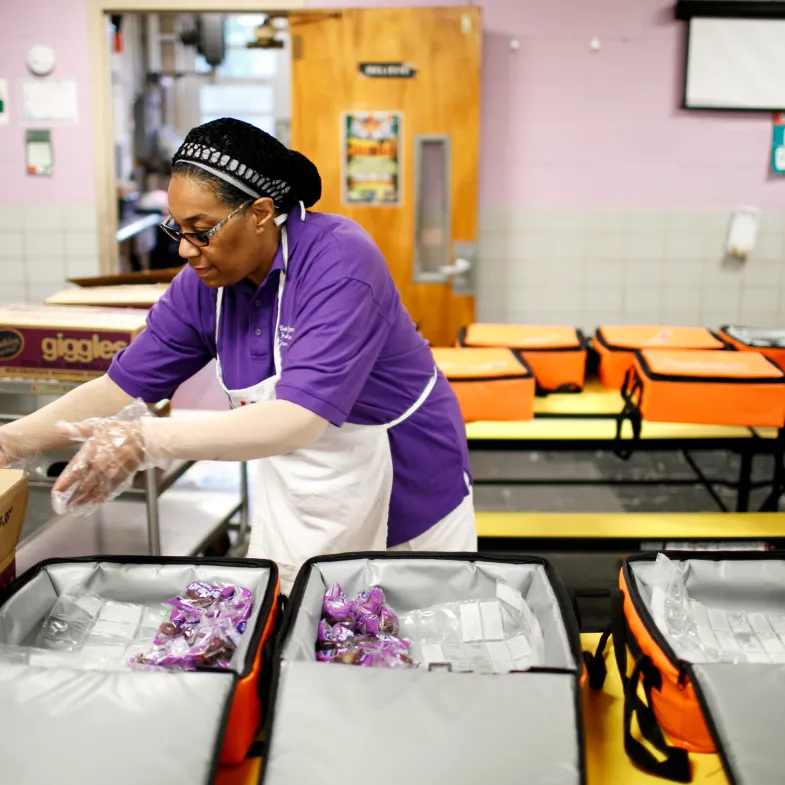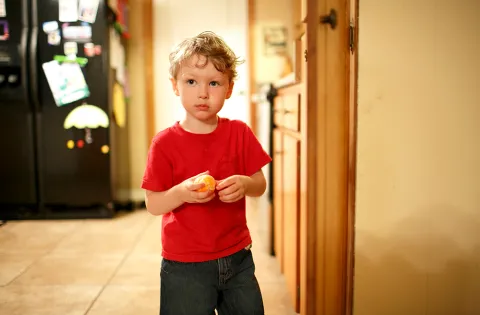Two new reports from No Kid Hungry show that school meals staff worry about keeping everyone safe, getting essential supplies and “backward progress” - but they also show innovation and resiliency in making sure kids are fed during a time of crisis.
The COVID-19 pandemic caused an economic crisis as well as a health crisis for millions of families. As school buildings closed and parents faced job loss, housing instability, financial strain and stress, one top concern has been how to make sure kids are still getting the food they need.
In May, No Kid Hungry distributed a survey to organizations serving food to kids in the context of COVID-19 school closures. The survey was designed to gather information about how organizations are serving meals and other food to families in their communities, the worries that are keeping them up at night, the children they fear they are not reaching, and what needs to happen next to make sure kids get the food they need.
No Kid Hungry also collected stories of innovation, a look at some of the new strategies schools and organizations were using to make sure children continued to get the nutrition they need. Despite very short timelines, shoestring budgets, and new hurdles for distribution, many schools and organizations were still able to pivot their programs to make sure kids got the food they need.
Among the top challenges:
- Many respondents describe food needs that are going unmet, in spite of their efforts. Because many school meal programs serve only breakfast and lunch, respondents listed other meals — dinner and weekend meals, for instance — that they are not currently serving, but that they believe families need to feed kids at home. Others cite families who specifically ask for fruits and vegetables, healthier food, and baby formula.
- They also worry about the stress felt by parents and caregivers. One respondent put it this way: “One of the significant challenges that is impacting our community is the mental and emotional toll. We have people breaking down in line and asking for resources for support. We are nutrition workers but are having to explore ways to connect struggling families with social workers and local resources for emotional wellbeing.”
- And they worry about operating logistics. Logistically, they worry most about their staff, procurement of food, procurement of packaging, basic equipment, food storage and delivery and their budgets.
In response to these challenges, some meal providers tweaked their programs and added new services. Among the most innovative:
- Some meal providers formed unique partnerships with restaurants in order to serve more meals. In one town, a restaurant group partnered with the school district so they would be able to provide meals for adults in addition to kids.
- While feeding kids is the primary job of meal providers, the current crisis led many of them to ask themselves how they could address some of the other challenges families are facing right now. One provider used daily meal deliveries to check in with students in her district and provide tech and homework support.
- Many meal providers, especially in rural areas, experimented with meal delivery. To make the delivery logistics work for her team, one meal provider paired direct delivery to families with a week’s worth of meals. This freed up capacity on her team and families appreciated receiving more than one meal at a time.
No Kid Hungry is working to support schools and other organizations using innovative strategies to reach children and families this school year.



